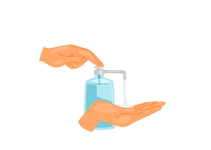Fludarabine
Introduction
Fludarabine is a chemotherapy medicine used primarily in the treatment of blood cancers such as chronic lymphocytic leukemia (CLL). It belongs to the class of medications called antimetabolites, which work by interfering with the DNA of cancer cells, preventing their growth and multiplication. Fludarabine is usually prescribed when other treatments are ineffective or not well tolerated. It is administered under medical supervision and is available in both injectable and tablet forms. Due to its potent action, Fludarabine is only used in serious conditions and requires careful monitoring during treatment.
Medicine Not Available for Fludarabine
Uses of Fludarabine
- Chronic Lymphocytic Leukemia (CLL)
- Non-Hodgkin’s Lymphoma (in certain cases)
- Bone marrow or stem cell transplantation (as part of conditioning regimen)
- Investigational uses in other hematological cancers
How Fludarabine works
Fludarabine works by inhibiting the synthesis of DNA in cancer cells. It mimics normal nucleotides and gets incorporated into the DNA chain during replication, causing premature termination. This process blocks the growth and division of rapidly multiplying cancerous white blood cells, leading to their eventual death and helping control the disease.
Benefits of Fludarabine
- Effective in treating chronic lymphocytic leukemia
- Helps when other treatments fail
- Used in preparation for stem cell transplantation
- Can be used in combination therapy for enhanced results
How to take Fludarabine
Fludarabine should be taken exactly as prescribed by a doctor. It is usually given as an intravenous injection in a hospital setting or taken as oral tablets at home. The dosage is based on body surface area, disease condition, and response to treatment. Adequate hydration and regular blood monitoring are important during therapy. Do not adjust or skip doses without consulting your healthcare provider.
Type of Dosage Available
- Fludarabine Injection
- Fludarabine Oral Tablets
Side effects of Fludarabine
- Common: Fatigue, nausea, fever, diarrhea, low blood counts
- Severe: Infections, lung toxicity, neurotoxicity, vision changes
- Long-term: Risk of secondary cancers, bone marrow suppression
Safety Advice
- Not recommended during pregnancy or breastfeeding
- Monitor blood counts regularly
- Avoid live vaccines during treatment
- Use effective contraception during and after therapy
- Inform doctor about any signs of infection or unusual symptoms
- Should be used only under medical supervision
Frequently Asked Questions (FAQs)
Q: What is Fludarabine used for?
A: Fludarabine is mainly used for treating chronic lymphocytic leukemia (CLL) and may be used in other blood cancers as advised by a doctor.
Q: Is Fludarabine a form of chemotherapy?
A: Yes, Fludarabine is a chemotherapy drug that works by blocking the growth of cancer cells.
Q: Can Fludarabine be taken at home?
A: Oral tablets can be taken at home under prescription, but injectable forms are usually administered in a clinical setting.
Q: What precautions should I take during Fludarabine treatment?
A: Regular blood tests, avoiding infections, and informing your doctor about any side effects are important precautions.
Q: Can I take other medicines with Fludarabine?
A: Inform your doctor about all medicines you take to avoid harmful interactions.
Download India's most affordable pharmacy app
- Compare with medicine prices
- Save upto 90% on your medicine bills

Temperature Controlled storage and delivery

Regular Sanitization

Disinfected Packaging









 Added!
Added!